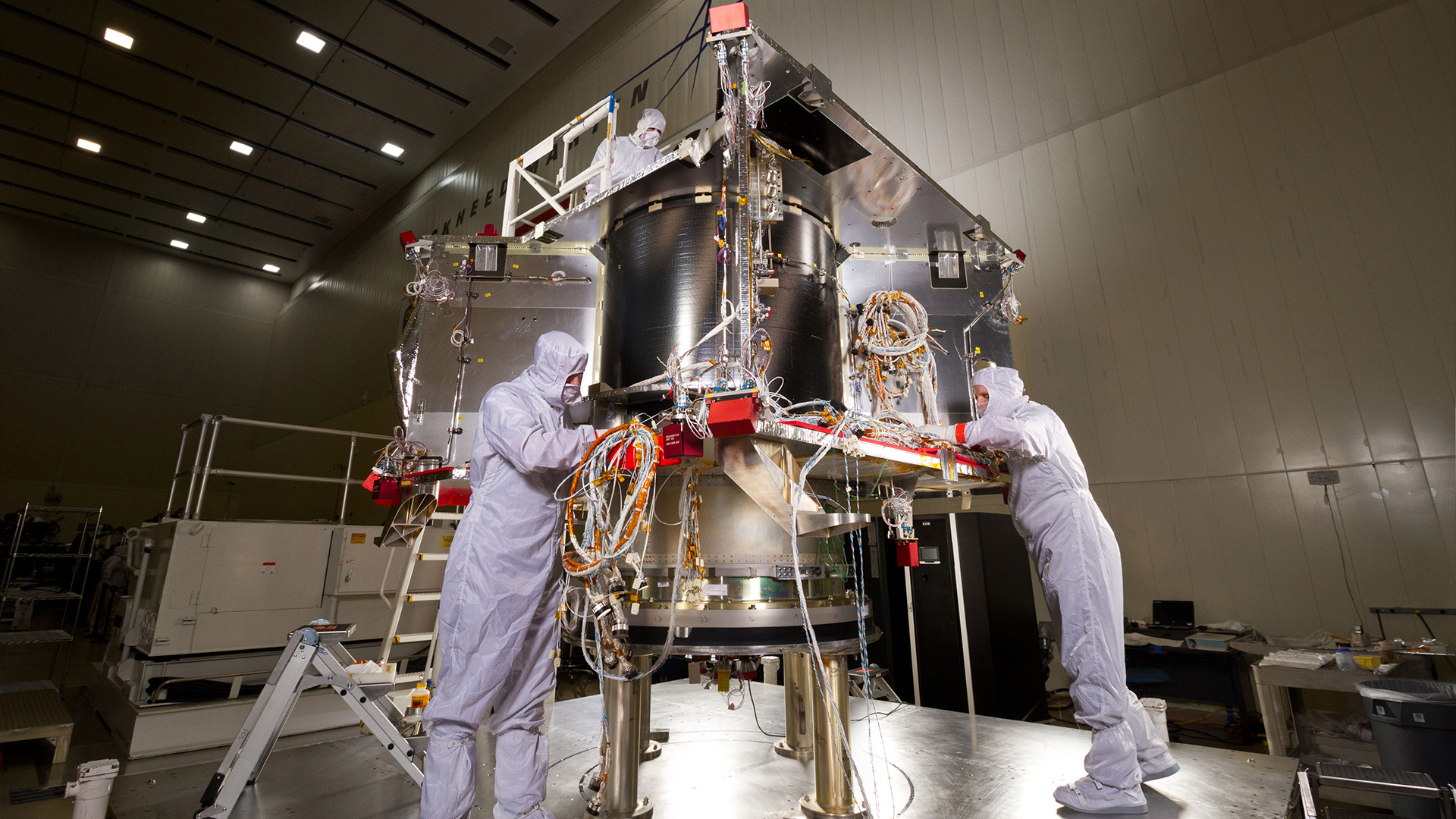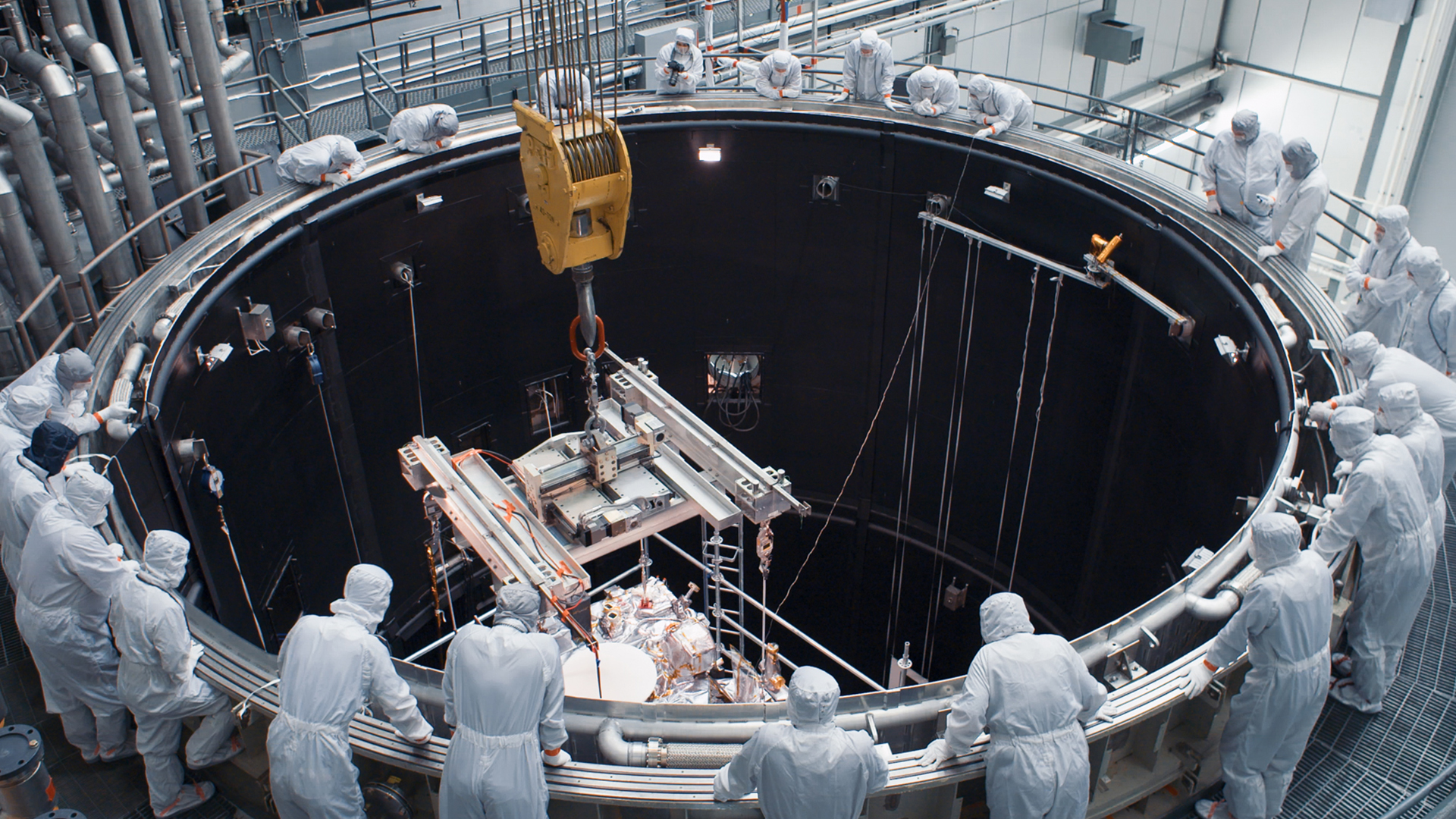
On Sept. 24, NASA's OSIRIS-REx spacecraft will come hurtling through Earth's atmosphere, carrying samples of the nearby, "potentially hazardous" asteroid Bennu.
The return is the climax of a seven-year flight — beginning with the spacecraft's 2016 launch — that was the first U.S. mission to collect a sample from an asteroid. Once analyzed, the sample promises to yield vital details about how life in the solar system began and about the movement of an asteroid that could one day crash violently into Earth.
Here's everything you need to know about the OSIRIS-REx mission.

What is OSIRIS-REx?
The OSIRIS-REx (short for the Origins, Spectral Interpretation, Resource Identification, Security-Regolith Explorer) spacecraft was developed for NASA by Lockheed Martin. It is roughly the size of a van and, when fully fueled, weighs around 4,650 pounds (2,110 kilograms).
Besides folding solar panels, onboard cameras, and equipment to map Bennu's surface, OSIRIS-REx is equipped with a 10-foot-long (3 meters) sample arm for retrieving chunks of rock from the asteroid.
After returning the samples to Earth, OSIRIS-REx is due to launch again in 2029 — this time, to the asteroid Apophis, another potentially hazardous near-Earth asteroid laden with intriguing subsurface materials.

What is Bennu?
OSIRIS-REx's first target, Bennu, is an 85.5 million-ton (77.5 million metric tons) space rock that is on track to swoop within 4.6 million miles (7.5 million kilometers) of Earth's orbit between 2175 and 2199. If Bennu, which is as wide as the Empire State Building is tall, were to slam into Earth, the estimated kinetic energy released would be 1,200 megatons — roughly 80,000 times greater than the energy of the bomb dropp ved on Hiroshima, Japan.
Whether this collision will occur is unknown. The projected odds (the highest for any known asteroid) are slim, at just 1 in 2,700, but unpredictable alterations to Bennu's orbit, made constantly by tiny nudges from starlight, could still shift it onto a collision course with Earth.

Why is OSIRIS-REx important?
The nudges provided to asteroids by the sun are known as the Yarkovsky effect. Named after the 19th-century engineer who first proposed it, the effect describes the fact that space rocks such as asteroids would, over long periods, absorb and emit enough momentum-carrying light to subtly change their orbits.
Quantifying the Yarkovsky effect is crucial to identifying and predicting which asteroids are potentially hazardous.
In fact, to land the spacecraft on Bennu, OSIRIS-REx's scientists made the most precise measurement of the effect yet. They have made a similarly precise measurement of the effect on OSIRIS-REx's next target — the potentially hazardous Apophis.
Asteroids like Bennu aren't important just for understanding how life on our planet could be destroyed but also for how it was born. Earth's water is older than the planet itself and was probably brought to our planet by asteroid and comet impacts.
But water wasn't the only material asteroids brought to Earth; the building blocks of life likely hitched a ride on a space rock, too. Bennu is a B-type asteroid, which means it contains high amounts of carbon and, potentially, many of the primordial molecules present when life emerged on Earth.
Some of these building blocks (including uracil, one of the nucleobases for RNA) were recently found on the asteroid Ryugu by the Japan Aerospace Exploration Agency's Hayabusa2 spacecraft, which returned to Earth with its sample in 2020. OSIRIS-REx mission scientists are hoping to find other intriguing potential precursors for Earth's biology on Bennu.

How did OSIRIS-REx land on Bennu?
After launching from Cape Canaveral, Florida, in September 2016, OSIRIS-REx spent the next year performing a close flyby of Earth. At its closest approach over Antarctica, the spacecraft flew roughly 10,700 miles (17,200 km) overhead — a maneuver that enabled it to slingshot itself to Bennu by increasing its speed by 8,451 mph (13,601 km/h).
Upon arriving at Bennu, OSIRIS-REx made a series of fine-tuned blasts to put it into orbit around the tiny asteroid. Then, for nearly two years, the spacecraft studied Bennu's surface, taking side-by-side photos that were later stitched into stereoscopic images (made by Queen guitarist Brian May, who worked with the team) to give scientists the best view of what would make for a safe and scientifically valuable landing site.
After much deliberation, the researchers settled on a rocky site they named Nightingale, which OSIRIS-REx touched down upon on Oct. 20, 2020. To stick the landing and not sink completely through the rubble-pile asteroid's surface, the spacecraft fired a quick blast of nitrogen gas from its Touch-and-Go Sample-Acquisition Mechanism (TAGSAM).
Besides stabilizing OSIRIS-REx on Bennu's surface, TAGSAM sent dust and broken rock flying into its sample chamber, which collected so much more of the material than expected (more than 2 ounces, or 60 grams) that it briefly had trouble closing.
With another blast of its thrusters, OSIRIS-REx lifted off from Bennu's surface, completing a number of flyovers before leaving the asteroid for Earth in May 2021. On Sept. 24, 2023, the spacecraft will land in the Utah desert. Once the samples are carefully collected to avoid any exposure to outside contamination, they will be sent to multiple labs for analysis.







